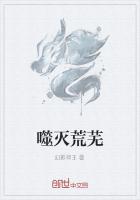Furthermore, there are two jaws; the front part of them constitutes the chin, and the hinder part the cheek. All animals move the lower jaw, with the exception of the river crocodile; this creature moves the upper jaw only.
Next after the nose come two lips, composed of flesh, and facile of motion. The mouth lies inside the jaws and lips. Parts of the mouth are the roof or palate and the pharynx.
The part that is sensible of taste is the tongue. The sensation has its seat at the tip of the tongue; if the object to be tasted be placed on the flat surface of the organ, the taste is less sensibly experienced. The tongue is sensitive in all other ways wherein flesh in general is so: that is, it can appreciate hardness, or warmth and cold, in any part of it, just as it can appreciate taste. The tongue is sometimes broad, sometimes narrow, and sometimes of medium width;the last kind is the best and the clearest in its discrimination of taste. Moreover, the tongue is sometimes loosely hung, and sometimes fastened: as in the case of those who mumble and who lisp.
The tongue consists of flesh, soft and spongy, and the so-called 'epiglottis' is a part of this organ.
That part of the mouth that splits into two bits is called the 'tonsils'; that part that splits into many bits, the 'gums'. Both the tonsils and the gums are composed of flesh. In the gums are teeth, composed of bone.
Inside the mouth is another part, shaped like a bunch of grapes, a pillar streaked with veins. If this pillar gets relaxed and inflamed it is called 'uvula' or 'bunch of grapes', and it then has a tendency to bring about suffocation.
12
The neck is the part between the face and the trunk. Of this the front part is the larynx land the back part the ur The front part, composed of gristle, through which respiration and speech is effected, is termed the 'windpipe'; the part that is fleshy is the oesophagus, inside just in front of the chine. The part to the back of the neck is the epomis, or 'shoulder-point'.
These then are the parts to be met with before you come to the thorax.
To the trunk there is a front part and a back part. Next after the neck in the front part is the chest, with a pair of breasts. To each of the breasts is attached a teat or nipple, through which in the case of females the milk percolates; and the breast is of a spongy texture. Milk, by the way, is found at times in the male; but with the male the flesh of the breast is tough, with the female it is soft and porous.
13
Next after the thorax and in front comes the 'belly', and its root the 'navel'. Underneath this root the bilateral part is the 'flank':
the undivided part below the navel, the 'abdomen', the extremity of which is the region of the 'pubes'; above the navel the 'hypochondrium'; the cavity common to the hypochondrium and the flank is the gut-cavity.
Serving as a brace girdle to the hinder parts is the pelvis, and hence it gets its name (osphus), for it is symmetrical (isophues) in appearance; of the fundament the part for resting on is termed the 'rump', and the part whereon the thigh pivots is termed the 'socket' (or acetabulum).
The 'womb' is a part peculiar to the female; and the 'penis' is peculiar to the male. This latter organ is external and situated at the extremity of the trunk; it is composed of two separate parts: of which the extreme part is fleshy, does not alter in size, and is called the glans; and round about it is a skin devoid of any specific title, which integument if it be cut asunder never grows together again, any more than does the jaw or the eyelid. And the connexion between the latter and the glans is called the frenum. The remaining part of the penis is composed of gristle; it is easily susceptible of enlargement; and it protrudes and recedes in the reverse directions to what is observable in the identical organ in cats. Underneath the penis are two 'testicles', and the integument of these is a skin that is termed the 'scrotum'.
Testicles are not identical with flesh, and are not altogether diverse from it. But by and by we shall treat in an exhaustive way regarding all such parts.
14
The privy part of the female is in character opposite to that of the male. In other words, the part under the pubes is hollow or receding, and not, like the male organ, protruding. Further, there is an 'urethra' outside the womb; which organ serves as a passage for the sperm of the male, and as an outlet for liquid excretion to both ***es).
The part common to the neck and chest is the 'throat'; the 'armpit' is common to side, arm, and shoulder; and the 'groin' is common to thigh and abdomen. The part inside the thigh and buttocks is the 'perineum', and the part outside the thigh and buttocks is the 'hypoglutis'.
The front parts of the trunk have now been enumerated.
The part behind the chest is termed the 'back'.
15
Parts of the back are a pair of 'shoulderblades', the 'back-bone', and, underneath on a level with the belly in the trunk, the 'loins'. Common to the upper and lower part of the trunk are the 'ribs', eight on either side, for as to the so-called seven-ribbed Ligyans we have not received any trustworthy evidence.
Man, then, has an upper and a lower part, a front and a back part, a right and a left side. Now the right and the left side are pretty well alike in their parts and identical throughout, except that the left side is the weaker of the two; but the back parts do not resemble the front ones, neither do the lower ones the upper: only that these upper and lower parts may be said to resemble one another thus far, that, if the face be plump or meagre, the abdomen is plump or meagre to correspond; and that the legs correspond to the arms, and where the upper arm is short the thigh is usually short also, and where the feet are small the hands are small correspondingly.
Of the limbs, one set, forming a pair, is 'arms'. To the arm belong the 'shoulder', 'upper-arm', 'elbow', 'fore-arm', and 'hand'.















